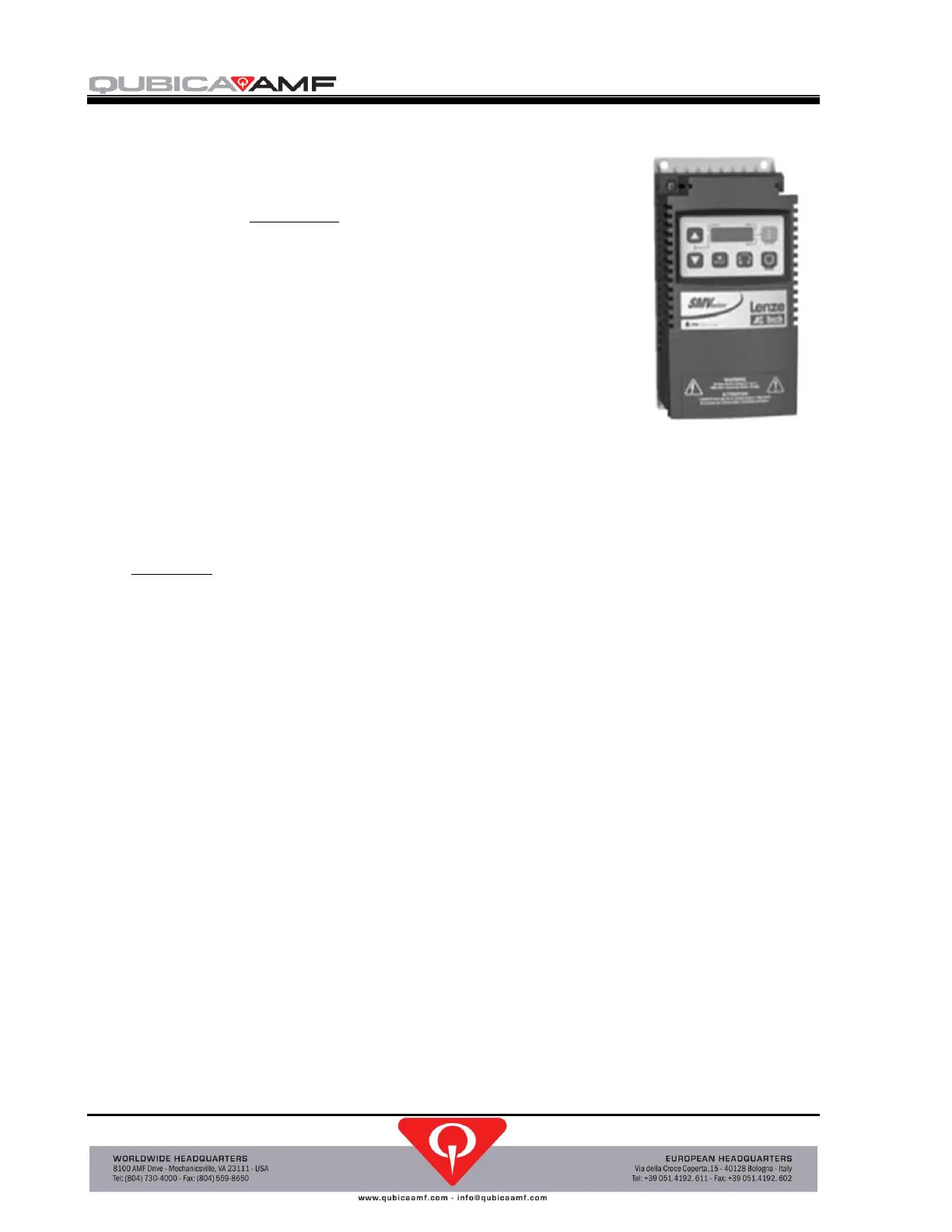TMS STRING PINSPOTTER OWNER’S MANUAL
400-051-010-01 Rev. Date: 7/17 Page 1-20
Drawbar Motor Controller
The drawbar motor controller takes the single phase, 50 or 60
hertz power that is supplied to the control chassis and
converts it to three phase, 0 to 200 hertz power for the
operation of the three phase drawbar drive motor. The speed
of this motor is proportional to the frequency of the power
supplied to it. By using a variable frequency controller, the
speed of the drawbar motor can be varied to optimize the
operation of the pinspotter. A variable low voltage direct
current signal supplied by the control chassis to the motor
controller determines the output frequency of the controller.
A pamphlet detailing the operation of this component is
included with your machine and contains important
information concerning safety, operation, troubleshooting,
and diagnostic messages.
Drawbar Motor
Located at the rear of each pinspotter is the drawbar motor and gearbox assembly. This
three phase AC motor is coupled to a reducer that drives a chain and sprocket arrangement to
drive the drawbar over its length of travel and is controlled by a variable frequency motor
controller. The motor contains an encoder and disk assembly. The disk has a series of light
and dark areas that are sensed by the optical encoder. When the drawbar is driven to the
HOME position, as detected by the Home Sensor (LOS), the drawbar motor encoder reading
is zeroed. As the motor rotates during operation, the encoder detects the bars on the disk and
sends this information to the control chassis which counts the number of bars to determine the
position of the drawbar. This information allows the Chassis to control the drawbar motor’s
speed to optimize machine operation. For example, the pins can be lowered fast and then
slowed down just before they reach the pin deck to minimize the chances of any pins falling
over when being set, and then the motor can speed up again to finish the cycle thereby speeding
up play.
Drawbar
Spanning the width of the pinspotter and attached to chains on both sides of the pinspotter is the
drawbar. The drawbar is made up of sheave (pulley) assemblies (one for each pin) mounted on
a shaft. Each sheave guides and takes up the slack of its corresponding pin's string when the
drawbar is driven towards the rear of the machine.
In addition to moving the pins, the drawbar operates the shield, which is designed to deter
the bowler from rolling a ball while the machine is cycling. The shield moves in opposition
to the pins. When the drawbar is pulled toward the rear of the pinspotter, the shield is
lowered. When the drawbar returns to the front of the pinspotter to lower the pins, the
shield is raised.
